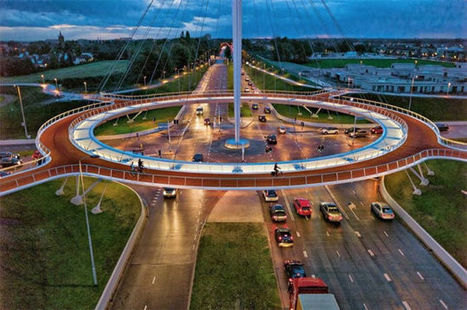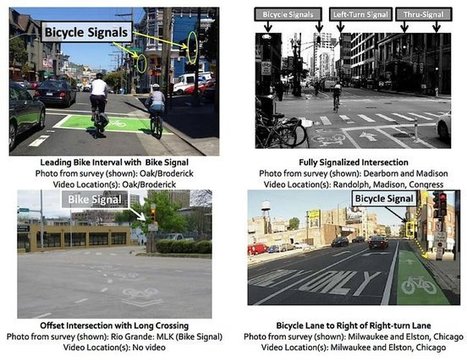The number of bikes in our cities is increasing, and with that increase we’re also seeing some major changes in the way cities are designed. Engineers are giving bikes their own bridges, tunnels, overpasses, even escalators, making biking feel like it’s an essential, permanent part of the city.
Last week, Copenhagen announced an elevated cycleway for the Øresund Bridge, an existing bridge which connects the city to Malmö, Sweden. The second longest bridge in Europe, and at about eight miles long, will likely be the longest dedicated bike bridge in the world. That’s a serious commitment to the cyclists in the region, but also to the health and well-being for all residents. Customised bike infrastructure is more comfortable, convenient, and safe for those who choose to travel on two wheels, but it’s also safer for pedestrians as well. As the biking movement gains momentum, we’ll be seeing cities devoting more space and energy towards these awesome bike-only improvements that make streets safer for everyone...
Via Lauren Moss



 Your new post is loading...
Your new post is loading...









La nouvelle impulsion donnée à l'utilisation de la bicyclette à des fins de déplacement comme de loisir en lien avec l'essor des pistes cyclables dans les villes et à l'orée de celles-ci représente un exemple réussi et concret de notre capacité à évoluer vers un mode de vie plus durable dans certains lieux... Et nous n'en sommes qu'à l'amorce.
Ce mouvement repose sur beaucoup plus qu'une injonction à la moindre consommation de carburant/ émission de CO2 ou même la contrainte de coût ou à l'inverse une impulsion citoyenne. Il relève plutôt d'un travail de marketing fondamental par rapport à un objectif d'accroître l'utilisation de la bicyclette en ville.
Il a fallu comprendre les citadins : identifier les leviers pour les engager à prendre un vélo (vitesse et liberté de déplacement, activité physique, plaisir...) ainsi que lever les freins à l'utilisation (sécurité, accès à un vélo, parking vélo...) et au final, mettre en place toutes les conditions de ce retour au vélo : parcs de bicyclettes à louer, voies cyclables... associée à une stratégie et des outils de communication multiples et permanents.
Place and Liveability Geography Year 7. 'The strategies used to enhance the liveability of places, especially for young people, including examples from Australia and Europe(ACHGK047)'